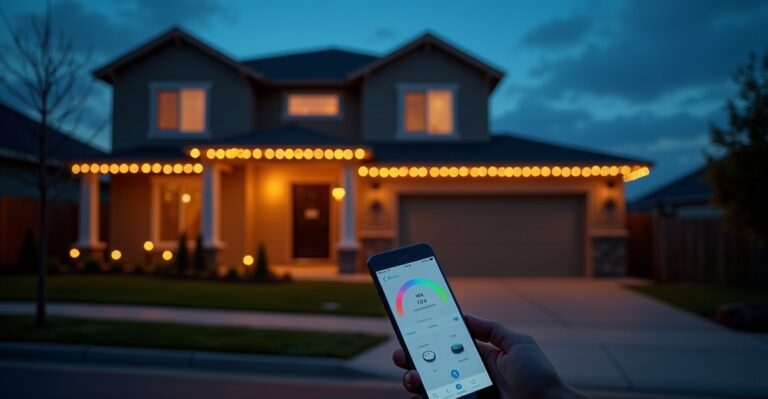How Permanent Outdoor Lights Handle Heat

Arizona’s heat demands lighting systems built for endurance. Permanent lights from heat-specialized manufacturers perform consistently, even under intense sunlight. We use advanced materials, smart engineering, and expert installation to ensure these systems don’t just handle the heat—they thrive in it.
Key Takeaways
- Heat-resistant materials like UV-treated polycarbonate and aluminum keep fixtures from warping, cracking, or fading in high temperatures.
- LED technology runs cool, which extends each fixture’s lifespan and ensures steady brightness in the desert.
- Internal features like ventilation channels and heat sinks help manage temperature and defend against damage.
- Installing lights in shaded areas, like under eaves, shields them from direct sun and allows airflow to cool components efficiently.
- Heat-sensitive controls and weather-graded parts enable smart systems to respond to temperature changes automatically, boosting safety and durability.
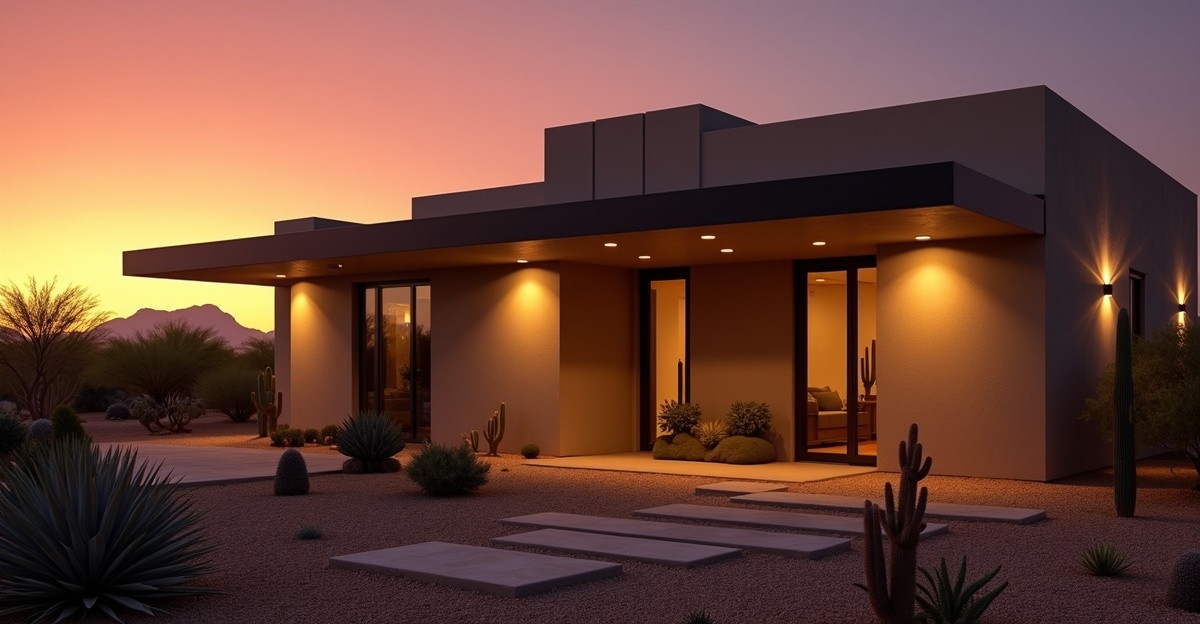
How Permanent Outdoor Lights Handle Heat
The Arizona sun doesn’t take days off, and neither should your outdoor lighting. That’s why we use permanent lights built to perform—day in, day out—without breaking a sweat. High temps, intense UV exposure, and dry air are all part of daily life here, so your lighting setup needs a system that embraces the heat, not fights it.
Built for Hot Weather Living
Permanent outdoor lights installed in high-temperature zones like Arizona use specially engineered materials and design elements that stand up to extreme heat. It’s about more than just temperature resistance—it’s about long-term reliability in a sun-soaked environment.
Here’s what makes that possible:
- Heat-Resistant Housing: Many systems use polycarbonate materials or aluminum casings that resist warping, cracking, and discoloration when exposed to long hours of sunlight.
- UV Protection: Lights often include coatings or lenses rated for UV resistance to prevent fading and clouding. This helps your lights stay bright and clear, season after season.
- Efficient Power Management: LED technologies are especially good at converting power into light without generating as much heat, keeping internal temps lower overall. Less heat equals longer life.
- Ventilation and Heat Dissipation: Well-designed lighting systems include built-in ventilation or heat sinks that help move warmth away from key components.
In fact, one of the biggest benefits of high-quality smart lighting systems is how long they last in these intense conditions. According to a study from the U.S. Department of Energy, LEDs often last up to 25,000 hours even in high-heat climates, thanks to their efficient design.
For more insight into durability, we’ve shared a helpful piece on how long permanent smart lights last in real-world conditions.
Choosing the Right Installation for Heat Protection
Even the best-built lights won’t perform properly without smart placement and expert installation. Where and how your lights are mounted matters just as much as the lights themselves.
Here are a few ways smart installation keeps your lighting system cool and working well:
- Under-Eave Mounting: Tucking lights under roof overhangs protects them from direct sunlight and adds natural airflow. Our under-eave lighting options are perfect for this setup.
- Proper Spacing: Giving each light fixture room to breathe helps disperse heat and prevents hot spots from forming along your roofline or gutters.
- Smart Controls: Timer-based or sensor-driven systems avoid running lights in the hottest parts of the day, reducing internal stress and wear.
With thoughtful placement and professional installation, homeowners get both performance and peace of mind. We recommend working with a reputable expert who knows how to handle Arizona heat with the right layout and equipment. If you’re looking for help, our team is ready at Big Pig’s contact page.
And yes—your roofline can handle it. We get that question a lot. We’ve broken it all down in this article about permanent lighting safety for your roofline so you can install with confidence.
The right system doesn’t just survive the heat—it shines brighter because of it.
For homes here in the desert, we often recommend models that merge style and substance. Learn more about selecting the best permanent lighting for Arizona homes to combine heat resistance with long-lasting visual impact.

How Permanent Outdoor Lights Handle Heat
Built for the Heat
We know Arizona heat isn’t just warm—it’s blazing. That’s why permanent outdoor lights are made to take the heat without giving up on brightness or reliability. High-quality systems use durable housing materials like UV-stabilized polycarbonate and powder-coated aluminum. These don’t just protect the inner electronics — they help reflect solar radiation and resist fading, warping, or cracking.
LED technology plays a big role too. Modern LEDs are far more efficient than older bulbs, converting most of their energy into light instead of heat. That means less internal heat buildup and better performance in high temperatures. The best systems are designed with built-in heat sinks or vents that draw heat away from critical components. This helps keep everything running smoothly, even in the peak of summer.
Some of the best permanent lighting for Arizona homes also factor in smart integrations, allowing us to monitor our lights’ health and make automatic adjustments. They dim slightly during excessive heat or shift colors to lessen energy draw—keeping everything safe while still shining strong.
For homes in hotter climates, it’s important we choose systems tested in environments like ours. We can count on options created specifically with desert summers in mind. If you want more insight on top-performing setups, take a look at the best permanent lighting for Arizona homes that we recommend.
Smart Choices for Long-Lasting Lighting
To make sure our lights stay safe and strong, we take a few smart steps when installing and using them. Here’s what we focus on:
- Proper placement matters: We avoid direct contact with constant heat sources like metal roofs or low-hanging eaves that soak up midday sun. Shaded or ventilated installs help minimize wear.
- Use of rated materials: Every component we choose—from housing to adhesives—is rated for high-heat applications. That way nothing melts, slips, or shorts out.
- Avoiding dark-colored surfaces: Lighter colors reflect heat better. We often recommend installing on trim or fascia that doesn’t trap heat.
- Ventilation helps a lot: Moisture and heat collection can strain any electrical setup. So we aim for airflow—especially when dealing with soffits or enclosed eaves.
Even with smart steps and heat-ready features, we know it’s worth knowing how long systems hold up under pressure. You can learn more on how long permanent smart lights typically last in hot climates like ours.
If rooftop safety is your concern, don’t stress. We’ve addressed that too in this guide on permanent lighting and roofline safety. Good materials, smart wiring, and skilled installs all help keep things secure long-term.
We believe permanent outdoor lights shouldn’t just survive the heat—they should look good doing it. That’s why we combine well-tested products with skilled installs and local experience. Whether it’s subtle soffit glow or vivid accents on stone or stucco, we’ll make sure your system shines—day and night, summer through winter.
Want a lighting setup that fits your home’s needs? Explore options for under-eave lighting installs that keep things cool while looking custom-made.
Or if you’re still unsure whether permanent lighting is the right move, check out the benefits of permanent lights vs. temporary setups and see how they outshine seasonal string lights in just about every way.
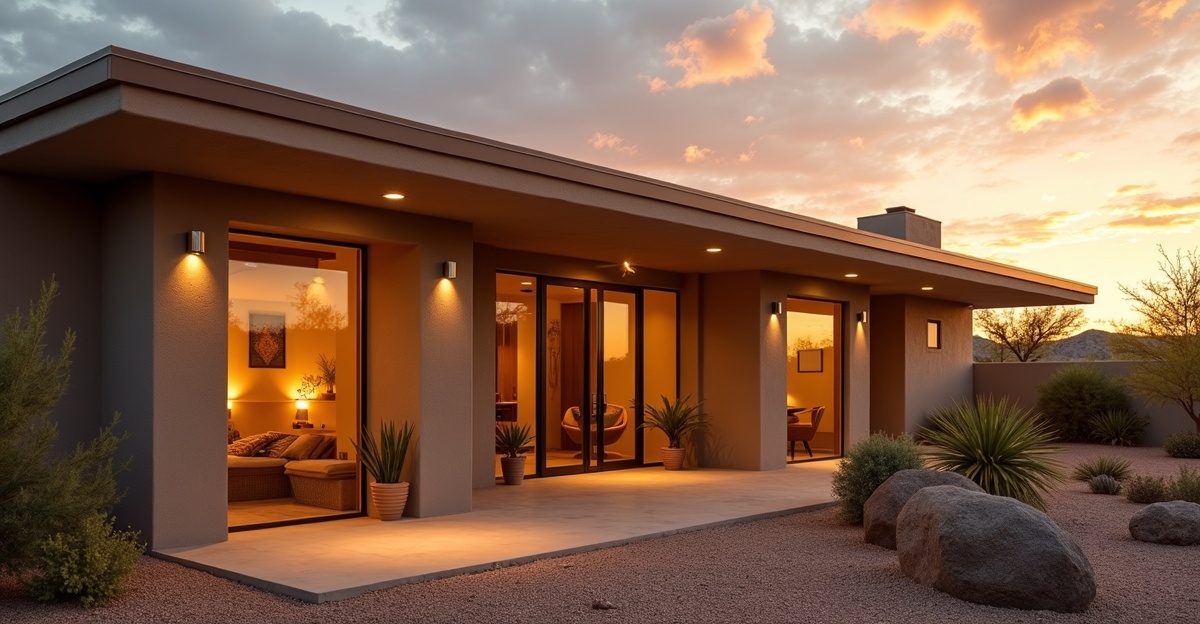
How Permanent Outdoor Lights Handle Heat
Permanent outdoor lights don’t just add charm—they stand up to some of the harshest conditions, including intense Arizona sun. We understand how crucial it is that lighting systems not only shine bright but also stay cool when temperatures soar.
Durability in High Temperatures
Permanent outdoor lights built for Arizona’s climate are tough by design. The materials, finishes, and internal components are all chosen with extreme weather in mind.
Here’s how quality lighting systems manage the heat:
- Heat-resistant materials: Aluminum housings, polycarbonate lenses, and UV-stabilized components help prevent warping, cracking, or fading.
- Efficient LED technology: LEDs generate less heat than traditional bulbs. That means they stay cooler and last longer—even in direct sunlight.
- Ventilation and heat sinks: Quality systems include built-in vents or aluminum heat sinks that pull heat away from sensitive components and extend the fixture’s life.
- Smart placement: Fixtures aren’t just slapped onto surfaces. They’re installed with airflow and exposure in mind so your setup continues to perform through the hottest days.
In places like Arizona where rooftop surfaces and siding can get scorching hot, these features make a real difference. Choosing the right system up front means fewer repairs, less maintenance, and fewer surprises when summer comes around.
Performance + Safety in Heat
Keeping lights cool isn’t just about longevity—it’s about keeping your home safe and energy-efficient too. Overheating can cause damage or even failure. Well-designed systems protect themselves and your property.
Here’s what a heat-tested setup provides:
- Stable brightness levels in peak daytime temps
- No flickering or dimming from thermal stress
- Wiring and seals that don’t degrade over time
- Consistent performance whether it’s 65 or 115 degrees
We’ve seen how smart systems built for heat outperform the rest. Manufacturers build these with Arizona in mind. That’s why it’s worth working with an expert who knows what works best. Check out what to look for in the best permanent lighting for Arizona homes—because not all lights are created equal, especially in the heat.
What You Can Expect from a Quality Install
When lights are installed using weather-smart practices, they’ll last years—without fading, sagging, or shutting down mid-season. Here’s what a heat-aware installation delivers:
- Professional mounting under eaves or shaded structures
- Fixtures selected for climate, tested in high-heat zones
- Thermal-rated drivers and power supplies
- Customized layouts to reduce sun exposure
We’re firm believers in treating your space like it’s our own. That’s why our installs involve more than just mounting lights—they include a full understanding of your specific conditions. Need help deciding how long your system will last under intense heat? We’ve already answered that in our guide to how long permanent smart lights last.
And if you’re still deciding whether to go all-in on a permanent setup, we walk you through the real difference in our article on the benefits of permanent lighting vs temporary lights.
Even though the Arizona sun can beat down hard, we’ll help you find lighting that keeps shining confidently through it. Our under eave lighting services make a smart choice for added protection, style, and performance year-round—rain or shine.
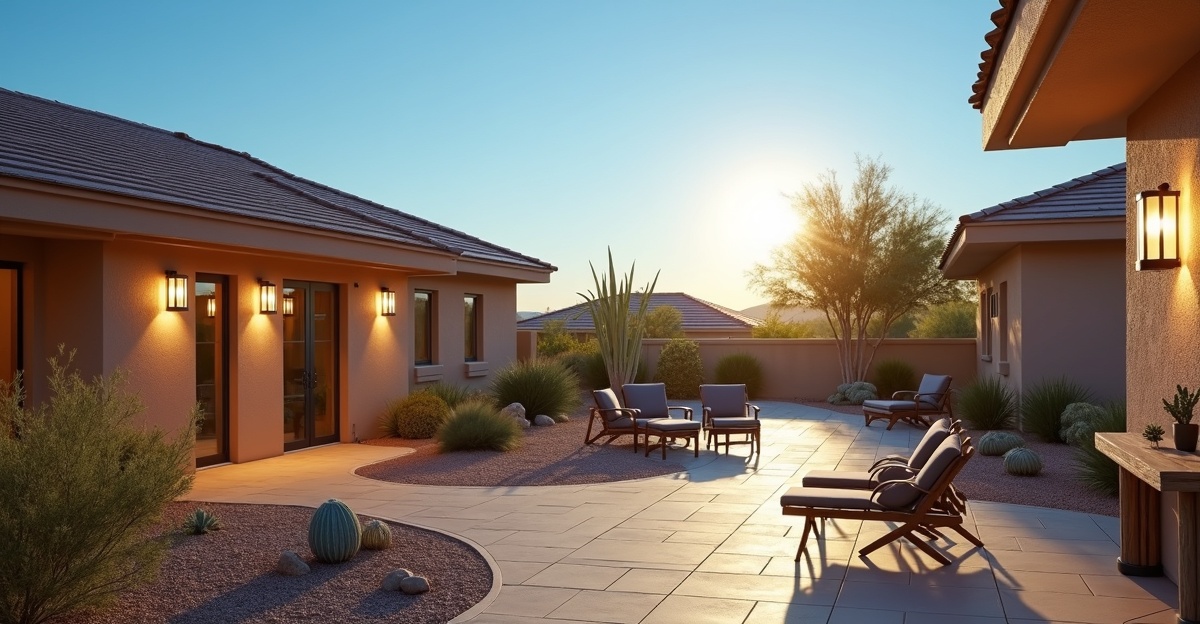
How Permanent Outdoor Lights Handle Heat
Built for the Arizona Sun
We know how intense the summer heat can be—especially in places like Phoenix, where triple-digit temperatures are more habit than surprise. That’s why high-quality permanent outdoor lighting is designed to handle it all. From ruthless afternoon sun to radiating rooftops, each component is made with materials that resist fading, warping, or cracking.
Housing units are usually constructed with UV-resistant polycarbonate or aluminum, which cope well with the brutal sunshine. It’s not just about holding up, either. These materials help keep the lights running cool even after hours of use, reducing the risk of short circuits and system stress.
LED technology plays a major role here. LEDs release very little heat compared to older bulb styles. That means the light stays consistent without raising the temperature around it. With energy-saving engineering and sealed wiring, each fixture breathes better and lasts longer—even through those 110° days. And if you’re curious about system longevity, check out our guide that breaks down exactly how long permanent smart lights last in real-world usage.
Design Features That Cool and Protect
Manufacturers take extra care to make sure these systems don’t just survive the heat—they thrive in it. Here are a few smart ways they do that:
- Thermal Regulation: Fixtures include built-in heat sinks that pull heat away from sensitive parts, keeping chips and drivers safe. Some even have venting to release trapped warmth efficiently.
- Weatherproof Coding: Many systems are IP65 or higher, meaning they’re sealed tight against dust, heat waves, monsoon storms—whatever nature throws their way.
- Color-Stable LEDs: Inferior lights can dim or shift color as heat builds up. Quality permanent lighting keeps colors true and vivid, whether it’s 70 degrees or 117.
Whether lighting up patios, walkways, or full rooflines, our systems are built with the desert in mind. From product specs to expert installs, it’s about giving homes lasting beauty without the burnout.
Want more insight into choosing fixtures that handle heat without losing style? Our recommendations for the best permanent lighting for Arizona homes can help narrow it down.
Smart heat-handling matters beyond comfort. We design safer, longer-lasting solutions that protect your home’s exterior as well. Thinking about adding lights to your roofline? Here’s what you need to know about permanent lighting and roofline safety before getting started.
To see how these cool-headed systems look once installed, explore our residential outdoor lighting options—created to shine year after year, no matter how high the mercury climbs.

How Permanent Outdoor Lights Handle Heat
Heat-Resistant Designs That Thrive Under the Sun
Outdoor lights in Arizona face more than their fair share of sun. We’re talking triple digits for weeks. That’s why permanent outdoor lighting systems are built with heat in mind right from the start. Good ones use materials like UV-stabilized plastics and aluminum housings that won’t warp, crack, or fade as temps soar.
The key is proper heat dissipation. Top-tier light systems feature internal components—like circuit boards and power drivers—engineered to manage thermal loads. Instead of trapping heat, they let it escape efficiently, keeping the lights cool and reliable even during the hottest summer afternoons.
When choosing lighting that’ll stand up year-round, we look for things like:
- Weather-rated enclosures with thermal protection
- LEDs rated for high ambient temperatures (like 140°F+)
- Sealed connections that keep moisture and dust out
And there’s something comforting about knowing your lights won’t flinch when the desert heat hits. You flip the app, change the color, brighten the front porch—and everything works just like it did in spring.
Real Performance in Real Heat
LED technology has come a long way. Today’s high-quality permanent lighting is equipped to handle long hours under the blazing sun without fading or burning out. It’s not just about survival—it’s about performance and consistency.
A study by the U.S. Department of Energy showed that LED fixtures, when properly heat-sinked, maintain efficiency even at elevated temperatures. That means your lighting won’t just last—it’ll stay bright and vibrant through all seasons. That’s a big deal for Arizona homeowners who want lights that do more than just look good for a month or two.
Here’s what good lights in a hot climate should offer:
- Consistent brightness even on 110°F days
- No “color drift” or dimming over time
- Components rated for high temps, not just mild climates
Put simply, it’s about building for where we live. Lights that ignore heat fail fast. Lights built smart? They shine longer, perform better, and need less fuss.
We also recommend planning placement wisely. While permanent lights are designed for durability, installing them under eaves or using them as under-eave lighting adds a layer of natural shading. That extra care protects both appearance and function, especially through those extra-sunny afternoons.
And don’t forget about control systems. Quality permanent fixtures often include smart controllers that monitor internal temperatures and adjust brightness or shut off if needed. That safety net helps extend the life of the lights—without anyone noticing a thing.
If you’re wondering how this holds up over time, we cover that in detail in our guide to how long permanent smart lights last. Spoiler: it’s longer than you might expect.
Choosing the right lighting in a climate like ours is about knowing which products are built for heat, and which ones just say they are. We’ve created a helpful breakdown in our post about the best permanent lighting for Arizona homes, where heat-handling really matters.
Permanent lights do more than handle the heat—they thrive in it. Whether it’s color-changing options for every season or subtle accents that light the walk to your door, reliable performance means you’re not replacing bulbs after every summer. And for homeowners ready to reclaim their weekends from hanging lights in the heat, we’re here with dependable residential outdoor lighting solutions built for Arizona sun.
Let’s not just get through the summer. Let’s outshine it.
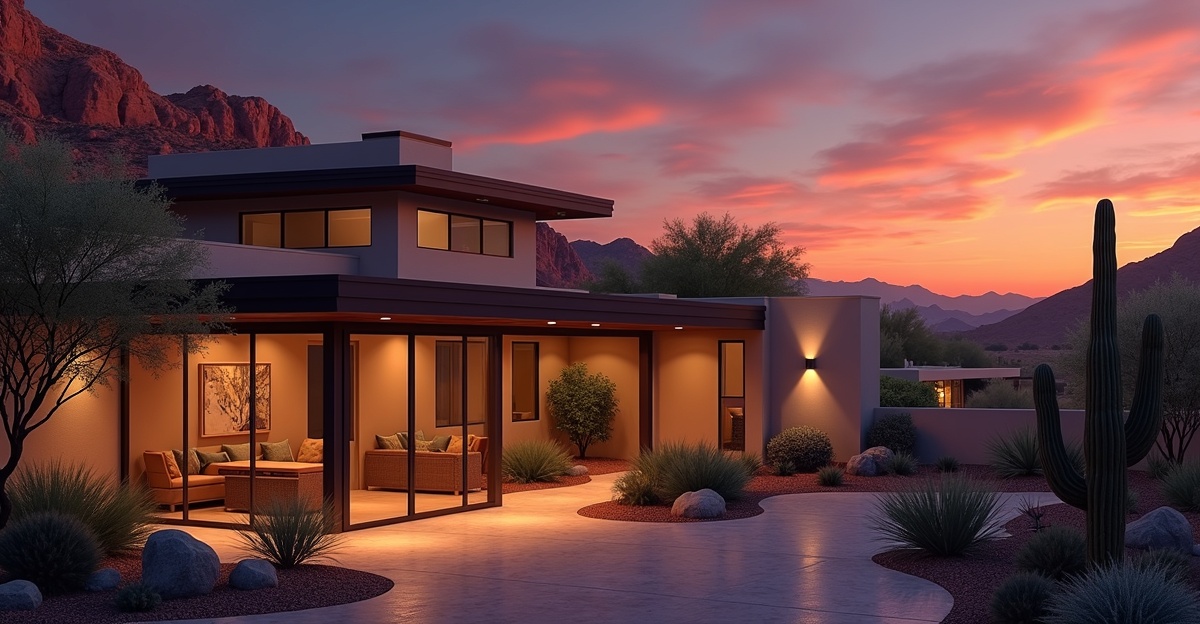
How Permanent Outdoor Lights Handle Heat
Built to Beat the Heat
We live where summer feels like it stretches forever, and the sun doesn’t take days off. That’s why permanent outdoor lights made for Arizona-style heat aren’t your average string lights. High-quality systems are crafted to stand strong in scorching temperatures without melting, warping, or fading.
Many premium lighting setups use heat-dissipating materials like aluminum or heat-treated plastics that hold up even during 110°F afternoons. Make sure the system you choose uses these types of materials, especially for components like the light tracks and mounting brackets. Cheap materials fade and crack fast in desert sun, while better builds stay bright year after year.
Our recommended systems also use low-voltage LEDs. These create less heat on their own, which means the lights stay cooler and safer—even when left on all evening. We’ve found that in most cases, LEDs operating at low wattage can endure far more intense environmental conditions than older incandescent setups.
What to Look for in Heat-Resistant Outdoor Lights
When choosing permanent outdoor lighting in hot climates, there are a few qualities that make all the difference. Here’s what we recommend checking out:
- Climate-rated components: Look for a product line that’s specifically tested for high-heat zones. If it’s designed for areas like Phoenix or Tucson, that’s a good start.
- UV-resistant coatings: Paint and plastics should resist fading or cracking from powerful sun exposure over the years.
- Smart controls: Systems that let us dim or schedule lighting during peak heat hours help reduce both wear and energy costs.
- Professional installation: A smart design paired with smart setup matters. Proper airflow and smart mounting help lights stay cooler naturally.
You can learn even more in our detailed guide on the best permanent lighting for Arizona homes.
Heat also affects how long lighting systems last. But well-made permanent lights can run for over a decade. Curious about longevity? We break it all down in our piece on how long permanent smart lights last.
For commercial installs, we up the ante. Higher-grade tech and precision placement ensure our commercial outdoor lighting customers get solid performance, even on rooftops that feel like a pizza oven by mid-July.
Trust the Setup and the Source
We always say: the right lights make magic, but only when they’re installed the right way. Heat doesn’t just stress the bulbs—it tests the entire system. From wiring and clips to timers and smart hubs, heat will show you what’s working and what’s not. We keep that in mind every step of the process.
Every installation we touch—whether it’s clean-lined under-eave lighting or eye-catching outdoor accent lighting—is planned with Arizona heat in mind. We think ahead. We allow breathing space, avoid placing lighting too close to thick insulation or heat traps, and test all functions during high temps. If we’re going to light up your home or business, we’re going to make sure it glows strong through the hottest stretches.
Don’t forget, safety on your roofline is another piece of the heat puzzle. Our systems are safe, sealed, and rated for year-round exposure, including those burning midsummer days.
And because we’ve spent years installing lights across Arizona, we know what works and what burns out early. Honestly, that’s what makes all the difference. Experience isn’t just helpful—it’s protection against future hassle.
You can count on us for systems that combine good looks with long-term light. The desert isn’t easy on anything—we make sure your lighting is one thing you don’t have to worry about fading out.

